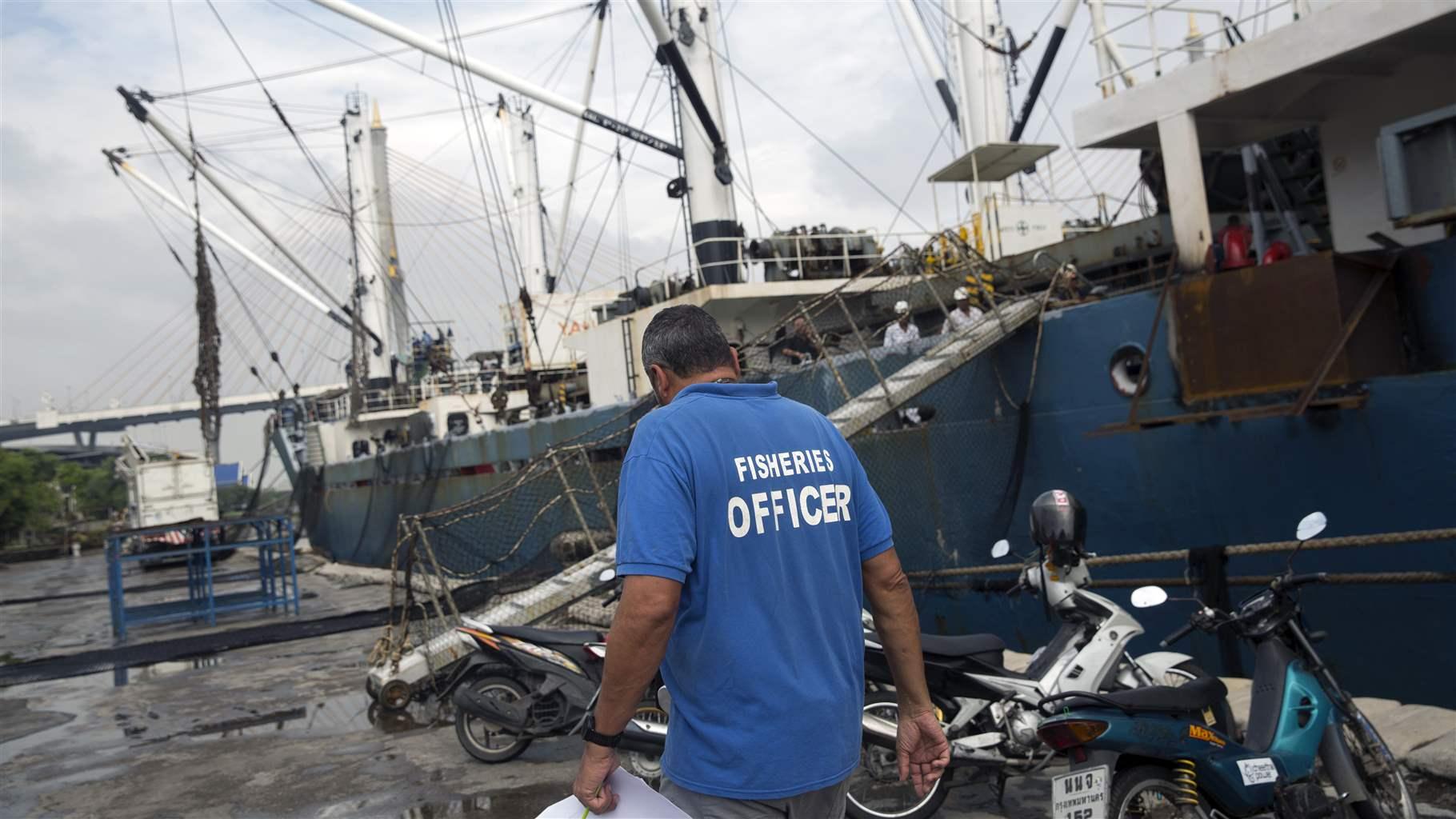End Illegal, Unreported, and Unregulated Fishing Through Improved Enforcement – The Pew Charitable Trusts

Report on Combating Illegal, Unreported, and Unregulated (IUU) Fishing and Its Alignment with Sustainable Development Goals (SDGs)
Introduction
Illegal, unreported, and unregulated (IUU) fishing represents a critical global challenge that adversely affects marine biodiversity, coastal communities, and economic stability. This report highlights the environmental and socioeconomic impacts of IUU fishing and underscores the importance of international cooperation and enforcement in addressing this issue in line with the Sustainable Development Goals (SDGs).
Environmental and Socioeconomic Impacts of IUU Fishing
- Environmental Consequences
- Exacerbation of overfishing leading to depletion of vulnerable fish species.
- Disruption of marine ecosystems and degradation of critical habitats.
- Economic and Social Consequences
- Undermining the livelihoods of legitimate fishers, increasing poverty levels.
- Contributing to food insecurity by reducing fish availability.
- Exploitation of labor, resulting in injury and fatalities among workers.
These impacts threaten the sustainability of global fisheries and marine health, directly relating to SDG 14: Life Below Water, which aims to conserve and sustainably use the oceans, seas, and marine resources.
Challenges in Addressing IUU Fishing
- Many fisheries span multiple national jurisdictions, complicating enforcement efforts.
- Existing international frameworks require enhanced implementation and cooperation.
- Individual country actions are insufficient without coordinated global strategies.
Strategies and Collaborative Efforts
The Pew Charitable Trusts is actively collaborating with various stakeholders to combat IUU fishing through:
- Engagement with governments, fisheries management bodies, enforcement authorities, and the seafood industry.
- Promotion of transparency, collaboration, and information sharing at domestic and international levels.
- Enhancement of oversight and regulation of fishing fleets.
- Effective implementation of existing international treaties.
- Protection of coastal waters and global oceans from IUU fishing impacts.
These efforts contribute to achieving multiple SDGs, including:
- SDG 14: Life Below Water – by promoting sustainable fishing practices and marine ecosystem protection.
- SDG 1: No Poverty – by safeguarding the livelihoods of legitimate fishers.
- SDG 2: Zero Hunger – by ensuring sustainable fish stocks for food security.
- SDG 17: Partnerships for the Goals – through fostering international cooperation and partnerships.
Conclusion
Addressing IUU fishing requires a comprehensive, cooperative global approach aligned with the Sustainable Development Goals. Strengthening enforcement, enhancing transparency, and fostering international collaboration are essential to protect marine biodiversity, support coastal communities, and ensure the long-term sustainability of the world’s fisheries.
1. Sustainable Development Goals (SDGs) Addressed or Connected to the Issues Highlighted in the Article
- SDG 14: Life Below Water
- The article focuses on illegal, unreported, and unregulated (IUU) fishing, which directly impacts marine ecosystems, biodiversity, and the sustainability of fisheries.
- SDG 1: No Poverty
- IUU fishing undermines the livelihoods of legitimate fishers and contributes to increasing poverty.
- SDG 2: Zero Hunger
- By reducing the availability of fish, IUU fishing contributes to food insecurity.
- SDG 8: Decent Work and Economic Growth
- The article mentions exploitative labor practices associated with IUU fishing, including injury and death, highlighting the need for decent work conditions.
- SDG 16: Peace, Justice, and Strong Institutions
- Emphasizes the need for stronger enforcement, international cooperation, transparency, and regulation to combat IUU fishing.
2. Specific Targets Under Those SDGs Identified Based on the Article’s Content
- SDG 14: Life Below Water
- Target 14.4: Effectively regulate harvesting and end overfishing, illegal, unreported, and unregulated fishing, and destructive fishing practices.
- Target 14.2: Sustainably manage and protect marine and coastal ecosystems to avoid significant adverse impacts.
- SDG 1: No Poverty
- Target 1.2: Reduce poverty in all its dimensions, including economic vulnerability of fishing communities.
- SDG 2: Zero Hunger
- Target 2.1: End hunger and ensure access to safe, nutritious, and sufficient food all year round.
- SDG 8: Decent Work and Economic Growth
- Target 8.7: Take immediate and effective measures to eradicate forced labor, end modern slavery and human trafficking, and secure the prohibition and elimination of the worst forms of child labor.
- SDG 16: Peace, Justice, and Strong Institutions
- Target 16.6: Develop effective, accountable, and transparent institutions at all levels.
- Target 16.8: Broaden and strengthen the participation of developing countries in the institutions of global governance.
3. Indicators Mentioned or Implied in the Article to Measure Progress Towards the Identified Targets
- Indicators Related to SDG 14
- Proportion of fish stocks within biologically sustainable levels (Indicator 14.4.1) – implied by the focus on overfishing and sustainability.
- Coverage of protected marine areas (Indicator 14.5.1) – implied by the need to safeguard coastal waters and oceans.
- Indicators Related to SDG 1 and SDG 2
- Prevalence of poverty in fishing communities (implied) – to measure economic impact on fishers.
- Prevalence of undernourishment (Indicator 2.1.1) – implied by food insecurity due to reduced fish availability.
- Indicators Related to SDG 8
- Number of victims of forced labor and human trafficking in fisheries (implied) – to track exploitative labor practices.
- Indicators Related to SDG 16
- Number of countries with transparent and accountable fisheries management institutions (implied) – linked to enforcement and cooperation efforts.
- Number of international agreements implemented to combat IUU fishing (implied) – to measure international cooperation.
4. Table of SDGs, Targets, and Indicators
| SDGs | Targets | Indicators |
|---|---|---|
| SDG 14: Life Below Water |
|
|
| SDG 1: No Poverty |
|
|
| SDG 2: Zero Hunger |
|
|
| SDG 8: Decent Work and Economic Growth |
|
|
| SDG 16: Peace, Justice, and Strong Institutions |
|
|
Source: pew.org








